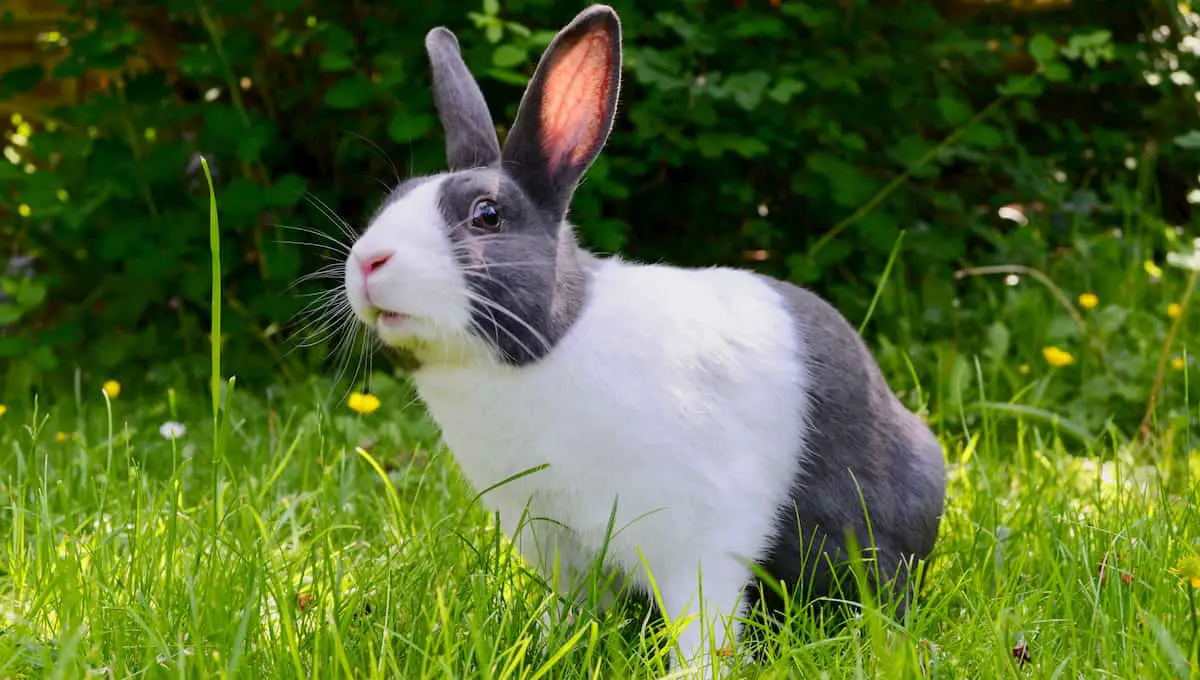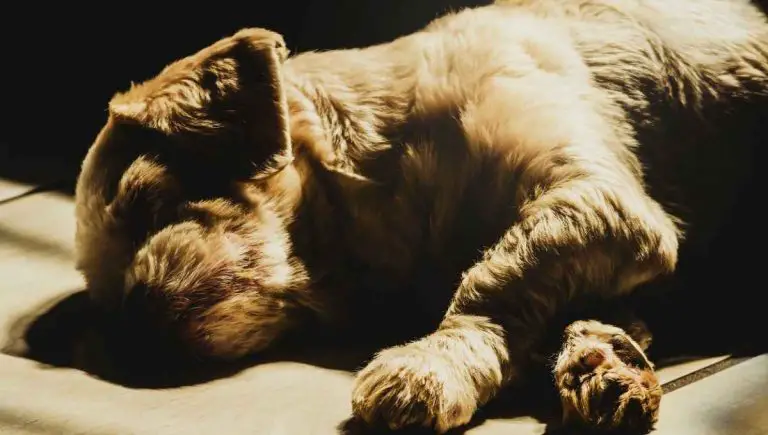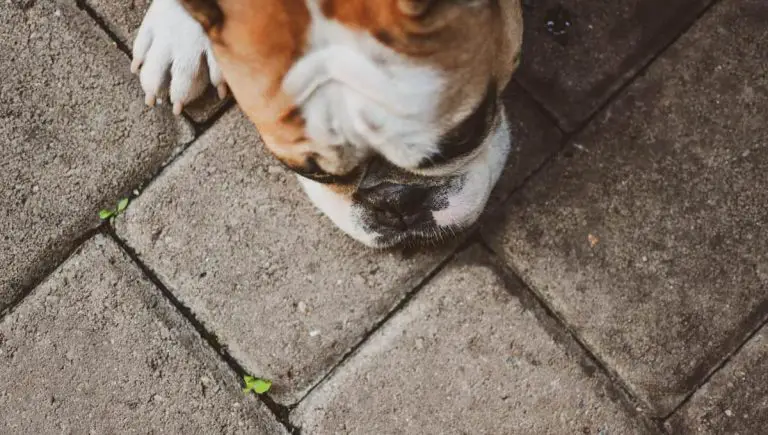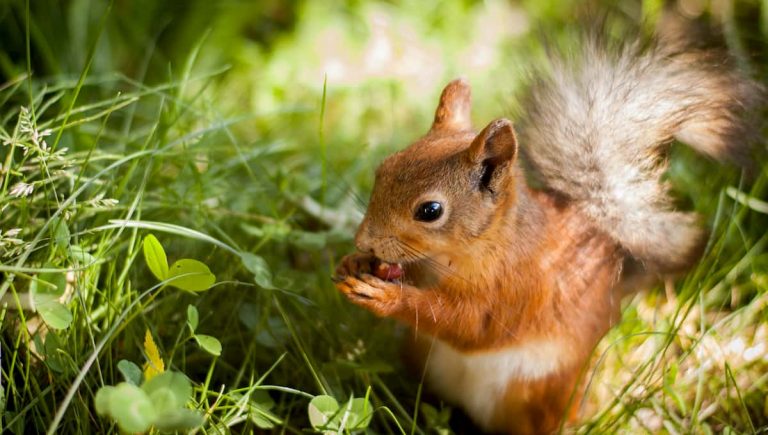Indoor and Outdoor Rabbit Hutches: The Ultimate Guide

Domesticated bunnies are wonderful additions to the family, but they do require a high level of care. Are you considering a rabbit as a pet? Here’s everything you need to know about indoor rabbit hutches and outdoor rabbit hutches to make informed and responsible decisions about the welfare of your new family member.
In this article, we’ll discuss the pros and cons of outdoor rabbit cages, inside rabbit enclosures, building diy bunny cages, plus we’ll look at rabbit behaviors and traits so that you know what to look out for when your beloved pet is unhappy, under-exercised, or sick.
What is a Bunny Hutch?
Type in the word ‘hutches’ on any eCommerce website, and you’ll come across multiple rabbit hutches varying in design, size, and cost.
However, in its simplest form, rabbit hutches are pens or cages that enclose one or multiple rabbits at a time. Traditionally, the frame of a rabbit shed is made from untreated, sturdy wood, which is covered by durable metal on the sides and top.
The hutch must be elevated out of the way of prey and moisture that causes dampness, especially if you’ve bought an outdoor rabbit cage.
The type of rabbit shed you buy largely depends on whether your new pet is to live indoors with you or outdoors in your garden. Wherever the cage is positioned, it should have the following key features.
Universal Features For Wood Rabbit Hutches
Enough Space Is Vital
Picture a rabbit enclosed in a tiny space, unable to move around or stretch properly. In this cramped area, the rabbit cannot move around and is forced to sit in its faeces, thus creating unsanitary conditions that attract a plethora of diseases. It cannot exercise, and over time, becomes overweight.
The above scenario describes a cruel reality for a rabbit where the space in its pen is incredibly lacking. Therefore, when choosing a pen, account for the size of your bunny.
Generally, the rule of thumb is that your hutch should be three-to-four-hops large and big enough for your bunny to stretch (which they love doing often). That said, larger is always better, especially if you plan to add to your bunny family.
Additionally, you should account for how large your rabbit will grow, especially if you have recently adopted a baby, which could potentially mature into a large bunny depending on the breed that you’ve acquired.
Divide Rooms Into Sleeping, Playing And Defecating Areas
Similar to their wild cousins, rabbits are also active animals that spend their waking hours burrowing, digging, chewing, and scurrying about. Therefore, it’s essential to create a sizable play area that is separate from their sleeping quarters, while also establishing a space for rabbits to eliminate their waste.
Several rabbit hutch ideas and blueprints incorporate rabbit runs, which are exercise tunnels that help your pet run, jump, dash about, and binky (these are midair acrobatics performed by rabbits when they’re especially excited and energetic).
The popular opinion is that rabbits are nocturnal, but they’re not. They’re actually crepuscular, which means that they’re most active at dawn and dusk. If you find that your pets don’t settle down when you’re turning in for the night – they will eventually, don’t worry.
If they’re outdoor dwellers, it’s crucial to create hiding spots for them to protect themselves against lurking predators. If there aren’t hiding spots present in their cage, your rabbit may feel exposed, hyper-alert, and fearful for their lives.
These hiding spots can be manufactured out of cardboard stuffed with hay or made from old rags or clothes to make nests for sleeping. These spots aren’t just used for protection but also provide shelter against the elements and helps your rabbit differentiate between sleep areas and exercise areas.
Whether your rabbit lives inside or outside, it’s vital to set up an area for urinating and defecating away from other spaces of a big rabbit house. Rabbits can be house trained similar to cats, using a litter box. When you first purchase your bunny, observe them to see which side of the cage they prefer to visit to go about their business, then set up the litter box near that position.
The Best Rabbit Hutch is Well Insulated and Made From Quality Materials
As their wild counterparts can survive outdoors, many assume that rabbits as domesticated pets can do the same. Engage this topic with experts on the matter, and you’ll encounter various opinions, which we discuss later.
However, if you decide to build or purchase an outdoor hutch, you must take into account the following:
- Outdoor insulated rabbit hutches are a must. Rain, cold, blustering winds, or heat, your pet must be protected from the elements. What does this mean? The hutch must comprise waterproof materials to prevent dampness and provide proper ventilation – rabbits can die from heatstroke during summer.
- Keep chewable parts out of reach. Keep wiring out of reach because dangling bits will be desirable for rabbits, which may be lethal if ingested. If your rabbit’s chewing has damaged the wood of the hutch, repair your hutch immediately to prevent your rabbit from escaping.
- Flooring. Mesh flooring is a necessary quality for a large outdoor rabbit hutch so that excrement can fall through easily. However, mesh metal can cause extensive harm to rabbit feet, especially when it’s extremely hot or cold underfoot. Consider adding solid, non-insulated material to parts of the flooring or an extra layer of hay as soft padding.
How To Build A Rabbit Hutch for Outside
If you’re a handy DIY’er, building a rabbit hutch could be your next project to undertake, and for an experienced handyman, is reasonably straightforward to construct. Depending on what you can afford, you can devise a cheap rabbit hutch without blowing the budget, using inexpensive materials and equipment.
The tools and equipment you’ll need to build a rabbit hutch include:
- Sturdy and untreated wood (straight, unknotted, and unwarped)
- Plywood
- Measuring tape
- Saw
- Wire mesh (gauge galvanized)
- Wire cutters
- Shingles (optional)
- Hinges
- Plastic Rim
- Bolt
- Wood Screws
- Staple Gun
Steps To Building The Best Rabbit Hutch For Outdoors And Indoors
Step One: Devise A Blueprint
In doing so, take note of your rabbit’s needs before starting to build. They will need ample space to run around while simultaneously being protected from predators and bad weather. At the same time, you’ll need to adjust your dimensions if several rabbits are hopping about to prevent overcrowding.
Step Two: Choose Your Wood For The Frame And Support
The length of the pieces may vary according to how big you want the cage to be. However, if you’re looking to build a small rabbit hutch to an average-sized enclosure, use two by 4 inches (5.1 by 10.2 cm) wood pieces for the frame.
Things to note: the type of wood you purchase is also important because rabbits can be destructive. As a safe measure, purchase pine wood – it can withstand damage caused by the weather and rabbits and is non-toxic for your pet.
Step Three: Selecting High-Quality Plywood
The best rabbit hutches have flooring and a roof, generally made from durable plywood. Buy a couple of sheets to start with – you can always use leftover pieces for other home improvement projects.
Step Four: Measure All Your Wood Pieces Before Constructing
As meticulous and methodical as this stage may be, it’s important because you might otherwise end up with a hutch that has a weak foundation, otherwise uneven and oddly shaped.
Measure each piece accurately using a measuring tape, making marks as you do (this is where you’ll cut your wood).
You will need to cut length, width, and height pieces.
Step Five: Sawing
Saw the wood at the points where there are marks. If you are unfamiliar with a saw and are anxious about causing bodily harm, consider having your wood professionally cut at a home improvement store.
Step Six: Buy Rolls Of Wire
Buying the correct wire is vital because your rabbit can easily gnaw through wiring, especially if it’s chicken wire. And if rabbits can escape the hutch, there’s a high chance that predators, notably raccoons, can enter the space and harm your beloved pet if the mesh barrier keeping them away is made of cheap and porous building materials.
The best wire mesh pieces you can purchase is 14 or 16 gauge galvanized, which will stand the test of time.
Step Seven: Create The Framework
Attach two width wood pieces to two height pieces to form two flat rectangles using wooden screws. Repeat the process to create another rectangle, then connect these parts using your length pieces. By the end, you’ll end up with a 3-D rectangle.
Once this step is completed, you will have built the basic structure of your cage.
Step Eight: Add The Mesh And Cut Out A Door
Cover your entire wooden structure with mesh, ensuring that it is held tightly as you staple it in place using a staple gun. An extra pair of hands is recommended for this task as it can be arduous to administer single-handedly.
Add your door by cutting out the mesh using wire cutters and then design a door as desired, using either plastic rim or a wooden frame with hinges. Once the door is constructed, don’t forget to cover it with metal.
Step Nine: Add The Posts
Whether you’re constructing one with the most basic design or building something more complicated, such as a 2 story rabbit hatch, posts are an important attachment because they keep the contraption off the ground.
Secure your wood pieces to be used for posts using a combination of L-shaped brackets and wood screws.
Step 10: Adding The Finishing Touches
While not conventionally used to form rabbit hutches, shingles add an extra layer of protection to your animal’s shelter, and will undoubtedly last longer as a result.
Can A Pet Rabbit Live Outside?
In today’s world, we’ve allowed our pets to live inside with us because we don’t just see them as animals, but as highly-valued family members.
That said, some rabbit owners leave their bunnies outside for a variety of reasons.
Is it cruel to keep rabbits outside”? Depends on who you’re asking. Some individuals believe that similar to the way you treat your dogs; you shouldn’t leave your rabbits outside, even enclosed in the best wood rabbit hatches that money can buy.
But Can Rabbits Live Outside In Winter And Thrive?
The short answer is yes. Granted, that while they are domesticated, they are hardy creatures that can survive temperatures as low as 32 degrees Fahrenheit.
If you plan on keeping an outside rabbit, here are some things to note to ensure their happiness and longevity.
For Their Health And Yours
Understandably, you might want your pet bunny close so that you can monitor them closely. However, your home may be a breeding ground for diseases, where dust might affect their respiratory systems.
It’s also common knowledge that bunnies are curious animals who love exploring, which could spell for disaster or even potential death if they’re exposed to cleaning agents and other toxic household products.
At the same time, even if your bunny is housetrained and won’t expel waste all over your home, their poop produces an ammonia odor that poses a danger to your family. Keeping their cages and litter boxes outside reduces this threat drastically.
Rabbits Are More Robust Than You Think
Don’t let their cute appearance fool you because pet rabbits are more robust than they look. As we’ve mentioned, due to their layers of fur, rabbits can withstand relatively cold temperatures. Which begs the question, “do rabbits get cold at night”?
In the wild, rabbits take refuge by burrowing underground. Therefore, shelters like a large rabbit hutch provide them with the cozy protection they need against an evening chill.
Emulates Their Natural Environment
A happy rabbit is one that has the freedom to run around, chew, and dig while breathing fresh air. In other words, your rabbit has the space to engage in its instincts.
At the same time, positioned in your garden away from the noises coming from your home, such as doors slamming, music blaring, and the whining of a vacuum cleaner, rabbits can dwell undisturbed.
Additionally, in the absence of artificial indoor lighting, your pet rabbit’s sleep patterns are governed by natural light.
Therefore, an outdoor rabbit hutch with run makes for the ideal outside exposure.
Where Do You Put A Rabbit Hutch Outside?
We’ve answered the question “can a pet rabbit live outside?” but where in your garden, are they the most protected?
Rabbits may be animals that can survive in various conditions, but they still require protection from enemies and the elements.
In nature, rabbits are prey to several predators, so it’s essential to place their hutches out of the way and protected from wild animals searching for food. Good spots to position your hutch in the yard are reconverted sheds. That way, you can let your rabbits out to play during daylight hours while keeping them protected at night in a covered area that’s still outside your home.
Rabbits prefer cold over the heat and can contract heatstroke if their shelters are under direct sunlight. If it’s hot outside, move the hutch somewhere cooler, like under the shade of a tree. Otherwise, bring them inside at midday to help them escape overly humid conditions.
During the heart of winter, it may be a good idea to move your rabbit’s shelter indoors temporarily, especially if you live in a particularly harsh climate. If you decide to leave your rabbit’s shelter outdoors, invest in an outdoor insulated rabbit hutch to ensure they don’t freeze and keep the enclosure off the ground because you don’t want the hutch becoming moist and damp either.
How Do You Keep A Rabbit Safe Outside
There are dangers to keeping your pets outside. It’s essential to be mindful of these dangers before you draw up the building plans of your large outdoor rabbit hutch.
Possible Predators
Unfortunately, rabbits are vulnerable to multiple predators, including raccoons, foxes, hawks, and other household pets. They are highly fearful as a result, and may even die of fright if they catch sight of them.
In their natural habitat, rabbits hide to avoid being attacked, so you must build hiding places to help camouflage them, especially if you’re anxious and wondering “can I leave my rabbit outside at night?”
It’s also important to note that rabbits cannot see in the dark, and leaving them outside in complete darkness may leave them hyper-alert, not knowing where their predators are situated. One way of preventing a rabbit from becoming sleep-deprived is to add a dimmed nightlight which may help calm your pet.
Escaping
Another common concern people have is “will my rabbit run away if I let it outside?”. Whether you supervise your rabbit’s outside visits or leave them there permanently, their escaping will be a concern.
Rabbits can gnaw and burrow deeply to escape their hutch if their hutch is made of inferior quality materials or isn’t properly constructed.
Ways to avoid the above scenarios is to ensure the wire you use to cover your hutch and exercise runs is premium grade metal and indestructible to obsessive chewers.
To avoid their escaping through burrowing, ensure that the hutch isn’t situated on top of the soil or grass.
Poisonous Plants
Unfortunately, rabbits don’t discriminate when it comes to grazing, so it’s important to learn the types of ornamental plants that are highly toxic to your rabbits. You can choose to either uproot them or re-plant them in a section of your garden that the rabbits don’t have access to.
How Do You Winterize A Rabbit Hutch?
During winter, you may decide to bring your pet rabbit inside. However, if it’s impossible to do so because a family member has allergies, your landlords don’t permit inside animals, or your dogs regard your colony of rabbits as prey, you will need to adequately equip your outdoor rabbit hutch to keep your animals warm, dry, and comfortable.
So how do I keep outdoor rabbits warm in winter? The solutions are more straightforward than you think.
A Hutch Must Be Clean And Dry
Rabbits can adapt to colder weather but not dampness. Cover the hutch during downpours and at night when the temperature plummets. If you have a rabbit hutch with a run, have it waterproofed with a tarp, so that your pet can exercise even when it’s cold, dark, and wet outside.
A Hutch Must Be Well Insulated
You can cover the outside of the hutch with old blankets you no longer use, making sure that there are openings for ventilation. If you live in a high rainfall area, it may be better to use transparent plastic sheets to keep water out. This way, the cage remains dry while your pet can still see outside through the translucent cover.
You can insulate the inside of your hatch inexpensively using materials lying around the house, such as adding pieces of carpet samples for your rabbit to lie on, using cardboard to build nests, or by laying down hay for extra bedding for their added comfort.
Avoid Heaters If You Can
Some pet owners may use heaters, thinking it’s a good strategy for keeping their beloved rabbits from freezing.
However, heaters are death traps for two reasons. Firstly, rabbits prefer to keep cool whatever the season. Therefore, the toasty conditions that heaters provide may unintentionally harm your pet. Secondly, the wires of radiators must be kept out of the way to prevent your rabbit from gnawing on them and getting electrocuted.
So, Can Rabbits Live Outside in Winter?
Rabbits can live outside in winter, granted that you’ve prepared their hutch accordingly. We’ve mentioned multiple times that rabbits cope well during the cold. That said, in the wild, rabbits react to the cold by digging warrens to keep the cold and wet out.
It’s important to imitate the conditions of a burrow by ensuring the shelter is well insulated and dry – ways of preparing the shelter have been discussed in the above section.
You may need to repair the hutch ahead of time, to ensure that it’s watertight, which means that leaks may need fixing or rotten wood replaced completely.
To survive, rabbits must consume 100ml of water daily, and one common problem that occurs in winter is that bowls of water left out for your rabbit freeze, resulting in dehydration. Heated water bowls can be bought online but do require electricity, so you must hide the wires to prevent chewing.
Product Picks
- Thermal Bowl Pet Heated Bowl from Cepheus
Why Would You Buy Rabbit Cages For Inside The House?
From reasons of safety to socialization, this section will discuss the several advantages to having inside rabbits.
Rabbits Are Sociable Animals
If you visit a shelter, the assistant helping you may encourage you to adopt rabbits in pairs. This is because rabbits are highly sociable and need companionship.
If for whatever reason, you can’t care for a second rabbit, keeping your pet inside prevents them from becoming lonely and depressed as family members are around.
Gain Peace Of Mind Knowing They’re Safe
You will know the general whereabouts of your rabbit if he or she resides indoors, and feel more relaxed knowing they’re not in danger of being nabbed by a hungry hawk.
At the same time, your rabbit will not be as terrified of perceived threats and being eaten in the outside world.
Additionally, your pets will be protected from the onslaught of bad weather.
Monitor Their Health
With your rabbit in close quarters, you can monitor them more easily and watch out for potential illness and injury. Due to their low ranking on the food chain, rabbits conceal their sickness and pain, which is more challenging to pick up if they live in an outdoor shelter.
Purchasing The Right Rabbit Hutch For Your Pet And Environment
Whether you’re looking for a plastic indoor rabbit hutch, an extra large outdoor rabbit hutch, or something in between; you should carefully look at the design ahead of your purchase.
Height
Should a rabbit hutch be off the ground?
Height is a huge factor when buying a hutch because one that’s close to the ground may be potentially harmful to your pet, especially in areas that experience harsh winters.
That said, if you live in a milder climate, there is no harm in keeping the hutch at ground level, granted your garden isn’t frequented by neighborhood cats or other yard visitors, or can’t be accessed by unwanted vermin, such as rats or mice.
Easy-To-Clean
Rabbits are clean animals who will get stressed by a dirty cage. To clean the cage, you must be able to have access to an opening that reaches all areas of the pen.
In-built Security
Depending on your budget, it may be a good idea to invest in a pen that has inbuilt hideaway spots for your rabbit – which is an essential feature for winter outdoor rabbit hutches.
Good Use Of Space
Your rabbit must have the freedom to roam within the confines of the cage. Therefore, you should look for a multi-leveled hutch, which maximizes the space you have while ensuring your rabbit is well exercise and not at threat of becoming bored or listless.
Some Of The Best Indoor Rabbit Hutches
Look online. You’ll find a variety of rabbit hutches, ranging from cheap rabbit hutches for sale to extravagantly designed, multi-storied big rabbit houses and large indoor rabbit hutches that run into the hundreds of dollars.
Whatever your budget and preference, you’re bound to find an affordable hutch that will keep your cherished animal safe, healthy, and happy. See below for our top recommendations.
Product Picks
- One-or-two story Midwest Deluxe Critter Nation
- The hybrid cage, Living World Deluxe Habitat
- The outdoor and indoor Aivituvin Rabbit Hutch. Includes a non-leak pull-out tray.
- The budget-friendly, heavy-duty tubular stand, Prevue Hendryx Animal Cage (blue and white).
The Best Outdoor Rabbit Hutches
If you plan on having outdoor rabbits, you must purchase the best hutch money can buy; to protect them from opportunistic predators, a cold winter, and to provide them with the comfort they need for survival.
As you shop around, be sure to look for the spacious cages, not forgetting to make room for litter boxes in them. So what is the best outdoor rabbit hutch currently on the market? See below for top-rated picks.
Product Picks
- Indoor and Outdoor bunny hutch with ladder Lovupet 2 Story Outdoor Wooden Rabbit Hutch
- The two-story wood bunny cage, SmithBuilt 48″ Rabbit Hutch – rain resistant and requires little maintenance.
- The well-designed, two-story, PawHut Wooden Bunny Rabbit Hutch (comes with an outdoor run).
- The outdoor and indoor, Be Mindful Bunny Hatch.
- The spacious Kinbor Outdoor 60″ Wooden Bunny Hutch (also suitable for poultry).
- Keeps weather off the roof Triangular Wooden Bunny Rabbit Hutch
Outdoor Rabbit Hutch For Multiple Rabbits
As you may know, rabbits are highly sociable animals. Are you looking for a hutch that can harbor two or three rabbits, giving them the space to play and the privacy to sleep and hide when necessary? We’ve found just the product for you!
Product Picks
- Good Life Wooden Hutch is suitable for indoor and outdoor use. With its spacious design, it can comfortably hold two to three rabbits and other small animals.
What Do You Put In A Rabbit Hutch?
Toys For Entertainment
You must kit out your hutch with various accessories because rabbits get bored quickly. When it comes to accessorizing your rabbit’s cage – you don’t need to spend exorbitantly.
You can fashion toys out of toilet rolls, cardboard, old cat toys, or you can even find non-poisonous sticks from your yard and other items that you don’t mind your new pet tearing to shreds.
It doesn’t matter what type of toys you give them, but you will need to rotate them often – rabbits will discard them eventually. See below for toys from Amazon.
Product Picks
- A toy and healthy snack rolled in one, the Bunny Chew Toys for Teeth from AUOKER
Feeding Rabbits
If you already own rabbits, you’ll notice that they spend the majority of their days chewing and nibbling on something. So what should you be feeding your rabbit?
Unlike Bugs Bunny, real rabbits can’t live off carrots alone. While they can eat the vegetable as a snack, their diet should be made up of 80-90% hay, along with other greens (but not all – please look these up before feeding your rabbit), and very occasionally pellets.
Rabbits are hay-made and consume orchard, oak, botanica, and other varietals.
Product Picks
- Purchase up to 60 pounds of “Perfect Blend” Timothy Hay Pet Food.
Litter Box Setup
We’ve mentioned before that rabbits are easy to housebreak, but you may find that your pet is stubborn and uses the bathroom where it sees fit.
Watch where in the cage your rabbit urinates typically and defecates, and gradually set up the litter box in that area. Encourage your pet by leaving bundles of hay in these areas because bunnies never stop eating, even when they go to the toilet!
Product Picks
- Premium potty trainer litter for critters, Kaytee Small Animal Potty Training Litter
Exercise Runs
Your rabbit is at risk of harming itself if there’s not enough playing space, which is when an exercise run comes in handy.
Exercise runs comprise wooden platforms with a wire mesh covering the sides and roof.
Some models come with in-built runs. However, you can build or purchase one. Ensure these are predator proof because the last thing you want is your pet being eaten while enjoying some exercise.
Overall Cage Set Up
You must divide your cage into areas for sleeping, playing, eating, and going to the toilet, which means that your cage must be big enough to accommodate these divisions.
With enough planning and by finding a suitable cage, you can devise a set up that your rabbit finds physically, mentally stimulating, and maximizes comfort.
Where Can I Buy a Rabbit?
When stopping by your pet store to buy feed for your cat or dog, you may notice a cute, furry face staring at you through a window. However, think twice before you buy one from a pet store, and verify where the animal comes from.
Often, rabbits are sold for profit, with no thought to their health and happiness, which give rise to digestive problems and stress caused by living in a cramped glass cage.
If you can, it may be an idea to adopt your pet from a rescue shelter where the organization’s workers have in-depth knowledge on how to raise rabbits.
Recap: Considering a Pet Rabbit? Here’s Everything You Need to Know Regarding Housing
Rabbits are endearing, lovable pets but can be high maintenance. If you’re purchasing one, the first thing you should ask yourself is where you’re setting up their hutch, which has been the main focus in this article.
- We’ve outlined what a bunny hutch is and why they’re necessary when owning rabbits.
- We’ve discussed the principal features of rabbit hutches, ranging from being resizable and dividing up areas of the cage for your pet’s enjoyment, to keeping your pen well-insulated and clean.
- We’ve provided arguments for keeping your rabbit inside and outside while answering the long-standing debate of whether it’s inhumane or not to leave your pet outside permanently and during the winter. Answer: it’s possible, but you must prepare the hutch for cold winters and hot summers, and protect your bunnies against predators.
- At the same time, we’ve made it clear that winter rabbits are more geared for colder temperatures, yet don’t take kindly to the heat.
- We’ve added a step-by-step process on how to build a rabbit hutch, using inexpensive materials and tools from home depot stores.
- We’ve recommended top products for inside and outside hutches respectively.
- We’ve included other product recommendations to keep your hutch cozy, including fun toys and nutritious feed.






